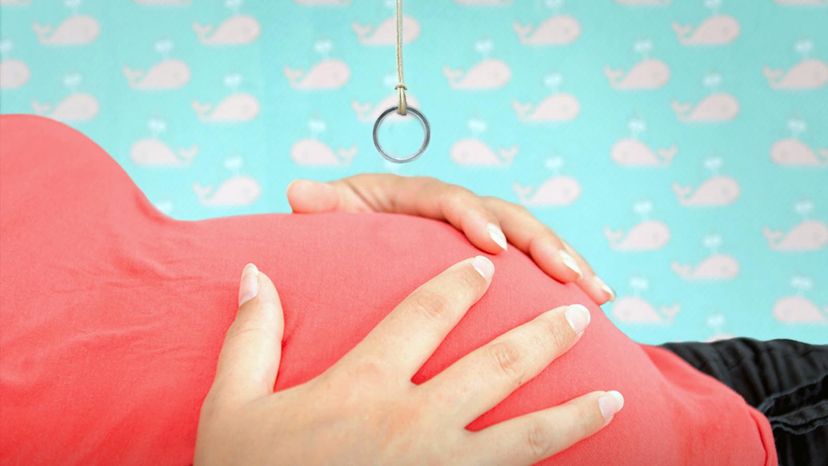To perform the ring test, also known as the string test, take a ring that belongs to the pregnant person (a wedding ring, for instance) and tie it to a thread or string. Have the pregnant person lie down and let someone else (such as a family member) dangle the ring over the baby bump.
According to the ring test, the baby will be female if the ring moves in a circle. The baby will be male if the ring swings back and forth in a straight line. Then again, as with many folktales, some people say the exact opposite: If the ring swings in a circle, it means the baby is a boy, and if it swings back and forth, it's a girl.
Of course, there is no scientific method to determine the sex of an unborn baby other than working with an obstetrician.

